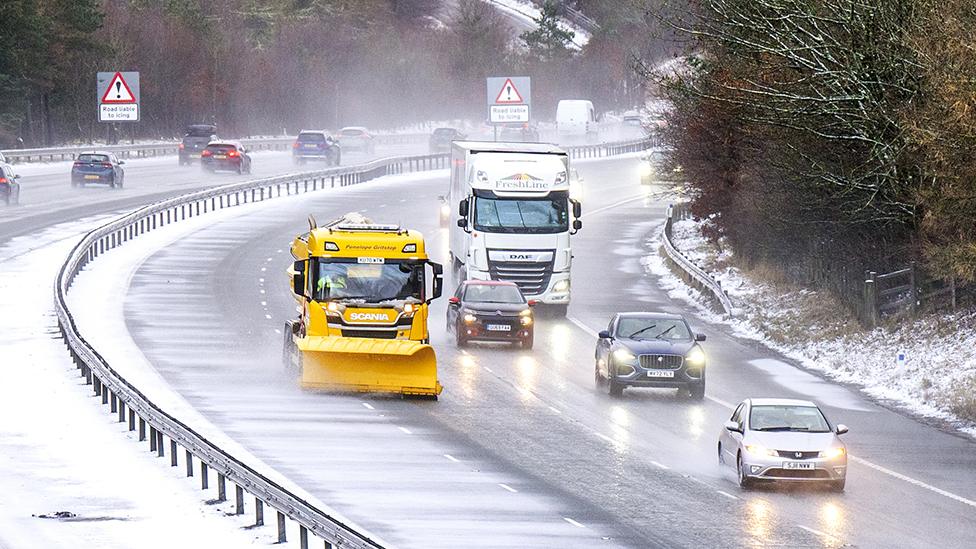How not to soak pedestrians - and other wet weather driving tips
- Published

For UK motorists, driving in the rain is just about impossible to avoid. We've broken down some of the most common wet weather road problems, including how to avoid being fined for drenching pedestrians and how to keep a car under control in standing water.
Is soaking a pedestrian with rainwater a crime?
Drenching a pedestrian by zooming through a puddle near a pavement is not only terrible manners, it is also potentially a criminal offence.
The same law, external which makes driving without due care or attention a crime also stipulates that it is an offence to drive "without reasonable consideration for other persons using the road or place".
The law calls this "inconsiderate" driving, and it applies to how motorists interact with pedestrians as well as other road users.
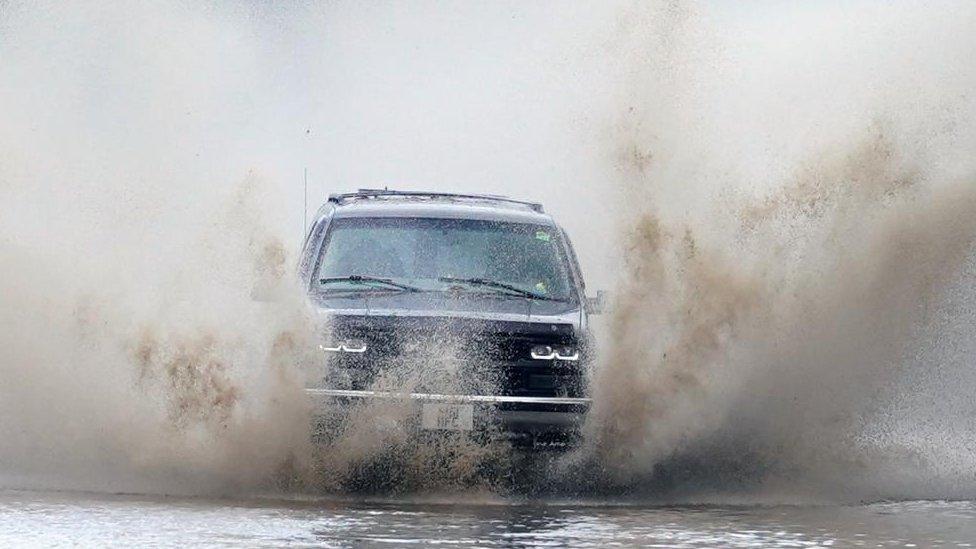
Drivers are expected to slow down in order to prevent pedestrians being sprayed
Since 2013, the police can hand out £100 fixed penalty notices and three penalty points for lesser road offences, including soaking pedestrians by speeding through puddles, according to the RAC, external.
But more serious cases of inconsiderate driving can end up in court, where magistrates can issue fines of up to £5,000 and add nine points to a licence.
The solution is simple: slow down when you can see there is standing water near a pavement.
Is it safe to drive on flooded roads?
It doesn't take much standing water to make driving potentially very dangerous. According to the AA, external, a car can begin to move in just 30cm (11.8in) of water, and float completely in 60cm.
Steering control can suddenly be lost when a thin layer of water gets between a car's wheels and the road when traveling at speed. This is sometimes called aquaplaning.
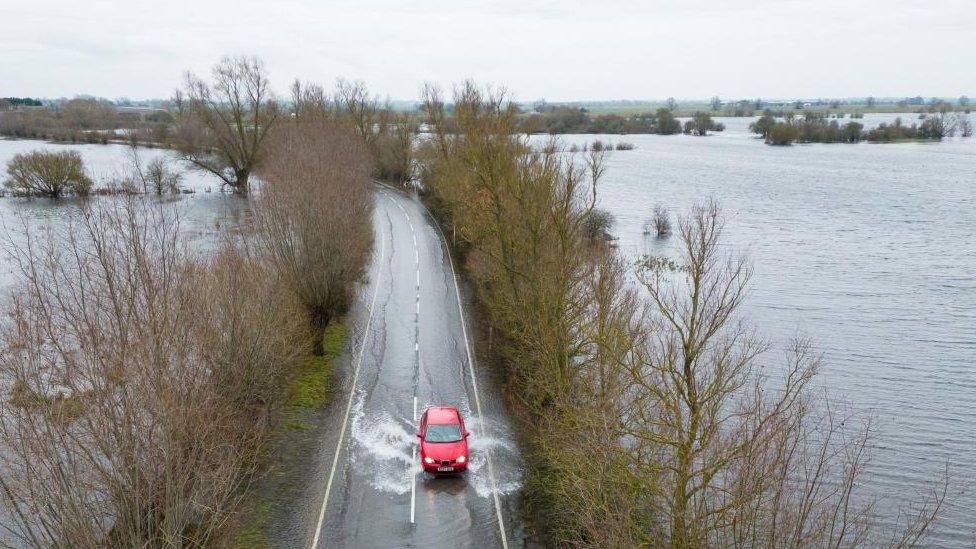
A small amount of standing water can result in a big loss of steering control
When this happens, motorists are advised to take their foot off the accelerator to slow down gradually and steer lightly until the car comes back into full contact with the road.
After driving through water, the AA says drivers should test their brakes as soon as is safely possible to make sure they are still working.
What is a safe stopping distance in wet weather?
When driving in rain, a motorist's stopping distance - in other words, the distance between your vehicle and the car in front - should be at least double the usual gap.
Wet surfaces mean tyres have less grip and it will take longer for your car to come to a halt if the car in front breaks suddenly.
The Highway Code, external sets out what constitutes a safe stopping distance at various speeds in dry conditions.
As a general guide, there should be a two-second gap when the weather is good - so in wet conditions, increase the distance enough so that gap becomes four seconds, the Code states.
What should you do if your car gets stuck in water?
The best way to avoid this happening is by following the AA's advice not to drive into any water that is moving or more than 10cm (4in) deep - and remember, it only takes a very small amount of water to wreck an engine if it gets inside.
The AA advises that it is "usually" best to stay inside the car and call for help if it becomes trapped in standing water on a road.
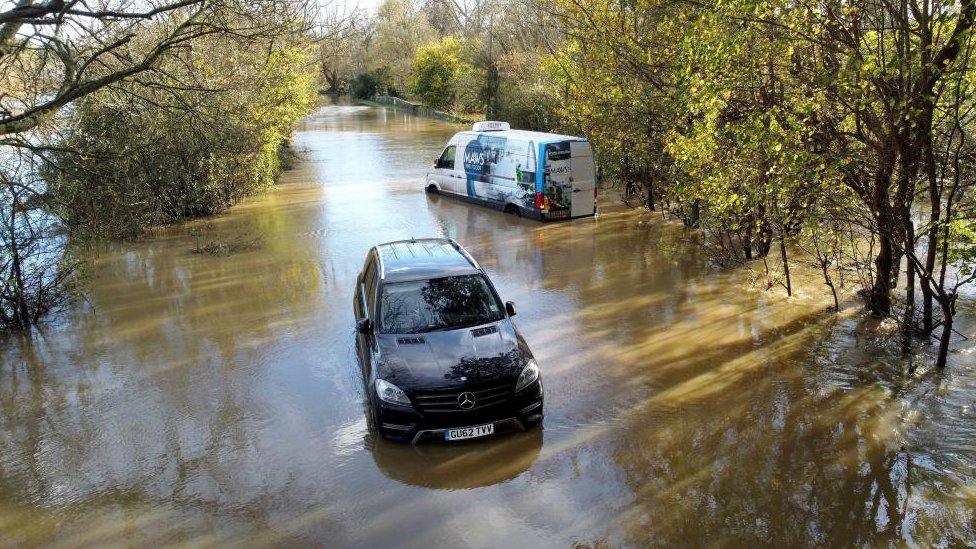
It only takes a small amount of water for a car to get stuck
If you do need to get out of the car, it is important to remember that just 15cm of fast-flowing water is enough to knock a person off their feet. Be aware of any hazards below the water - especially manhole covers which might have come loose.
Floodwater may be highly contaminated with sewage or other pollutants, so get to dry ground as quickly as possible.
Are potholes more of a problem in the rain?
Rain or shine, potholes on the UK's roads are a constant bugbear for motorists.
The RAC estimates, external there are more than one million of them, and the organisation reported its highest number of pothole-related breakdowns in the third quarter of 2023 since it started keeping records in 2006.
Large potholes can quickly become submerged in heavy rain and might not be visible from the driver's seat, so reduce speed to limit the chances of hitting one at pace and damaging your car.
Earlier this winter, the AA told motorists: "Our advice to drivers and those on two wheels is to avoid puddles where safe to do so, but if there is no alternative other than to travel through, then reduce your speed and keep an increased distance from the vehicle in front."
Related topics
- Published27 November 2023
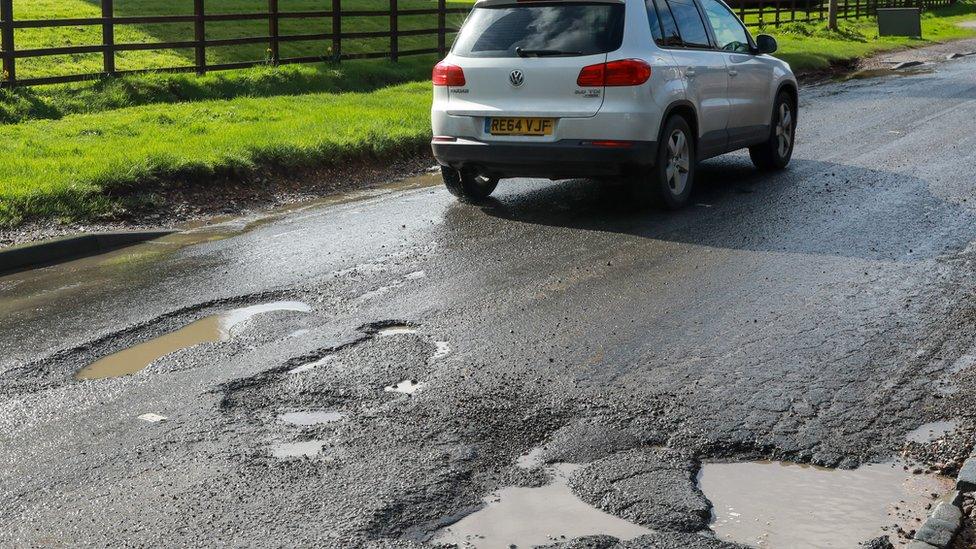
- Published27 December 2023

- Published6 January
